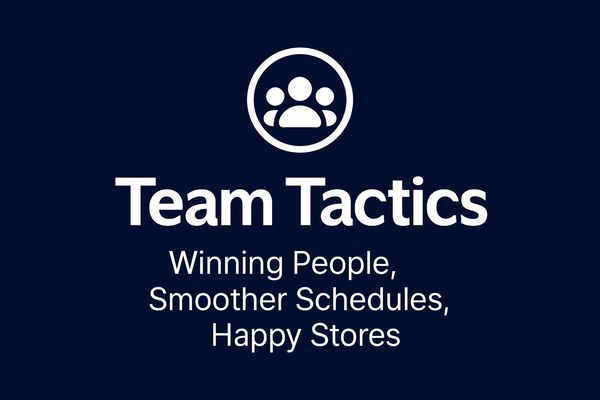How to Analyze Sales Reports in a Convenience Store
Sales reports reveal customer behavior patterns and growth opportunities beyond just numbers. Focus on top-selling items, basket size, category performance, and margins. Stores that review reports weekly see 10-15% faster growth than those checking occasionally through systematic analysis.

Successful convenience store managers know that sales reports are not just paperwork. They are the playbook for making smarter decisions and finding hidden growth. Without a system, reports can feel overwhelming. With a strategy, they become one of the most powerful tools you have to shape your store’s success.
Why Sales Reports Matter
When you look at a sales report, you are not just seeing numbers. You are seeing customer behavior in action. Which items sell fastest, what times of day bring in the most business, and where profits are slipping all live inside those reports.
Managers who review their reports weekly tend to make quicker adjustments. Industry data shows that stores analyzing sales reports regularly see growth 10 to 15 percent faster than those that only check occasionally.
Frequently Occurring Thoughts from Store Managers
Sales reports trigger different thoughts depending on a manager’s experience level. Here are a few voices that might sound familiar:
- “These reports look like a foreign language. Am I even looking at the right numbers?” (New Manager)
- “Every week I say I’ll sit down with the reports, but there’s never time.” (Overwhelmed Manager)
- “The store is doing fine, but fine isn’t growth. Where’s my next 10% going to come from?” (Experienced Manager)
- “What I love about reports is they never lie. The answers are in here if I look closely enough.” (Strategic Manager)
These reflections show that no matter where you are in your journey, sales reports often spark both uncertainty and opportunity.
Breaking Down the Data
Focus on the Right Metrics
Not every number matters equally. Instead of getting lost in the details, track metrics like:
- Top-selling items: What drives most of your sales
- Basket size: Average value per transaction
- Category performance: Snacks, beverages, tobacco, or prepared foods
- Margins: Which items bring the most profit
These metrics help you understand both what sells and what actually pays the bills.
Spot Opportunities and Weaknesses
Look for patterns in your reports. Are drinks spiking during certain hours? Is a category slowing down compared to last month? This analysis tells you where to double down and where to adjust.
For example, a slow snack category might mean you need better placement or a bundled promotion.
Turning Reports into Action
Create a Weekly Review Habit
Set aside time every week to review reports. Even 20 minutes is enough to catch trends before they become problems.
Test, Measure, Repeat
Think of your reports as a feedback loop. If you try a new display or promotion, check the numbers before and after. If it works, repeat it. If it fails, move on.
Managers who use this cycle consistently turn reports into measurable sales lifts.
Bottom Line
Sales reports are not just a requirement. They are a roadmap. By focusing on the right metrics, spotting opportunities, and acting quickly, you transform raw numbers into strategies that drive growth.
🧑🏫 One-Line Manager Tip
“Your sales reports are not just numbers, they are customer behavior written down.”





